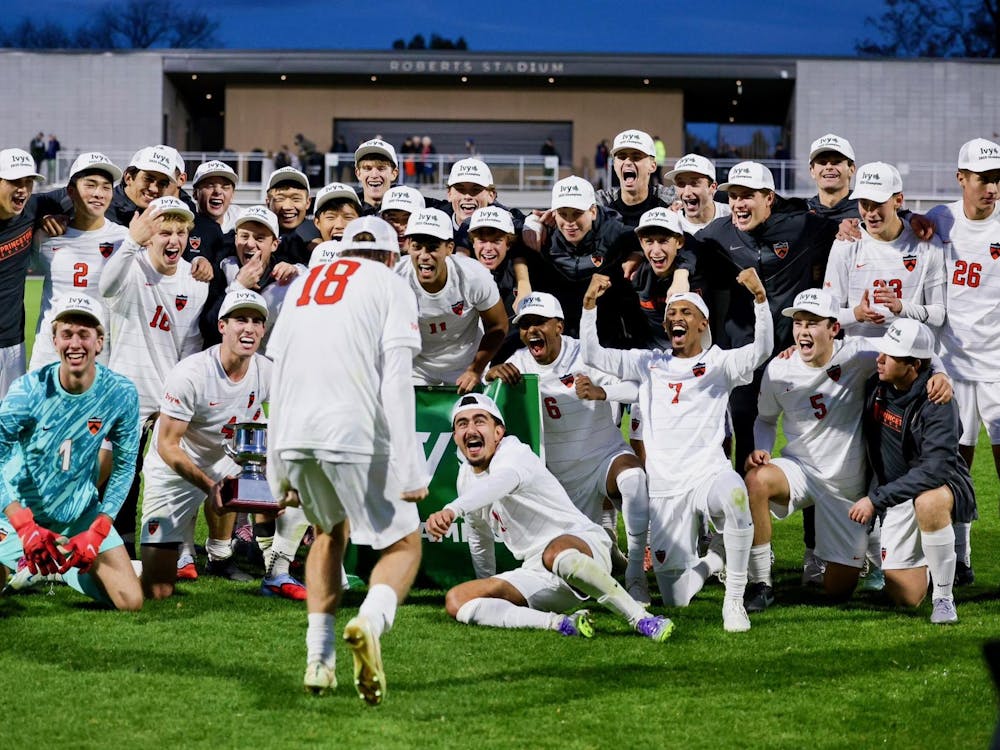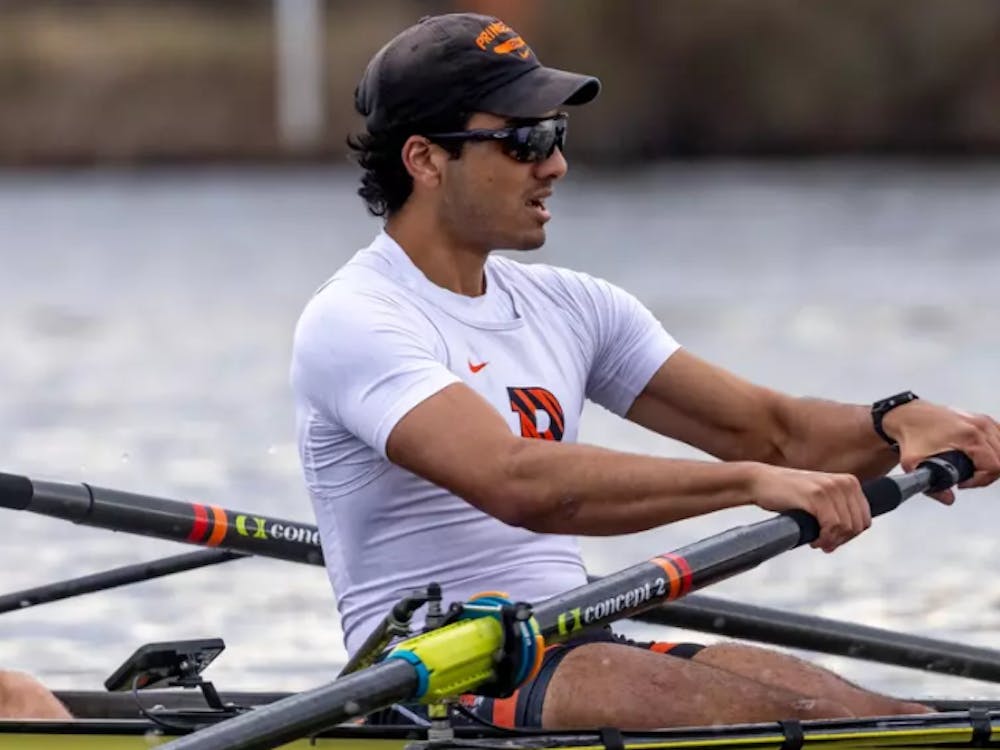To current students, Princeton men’s basketball may not look like the strongest of programs. Coming off a 6-23 season, the worst in program history, and accumulating a less-than-phenomenal 4-8 resume so far this year, the Tigers do not present themselves as a very formidable opponent.
Princeton basketball, however, has seen brighter days.
The history
Princeton basketball became a reality in 1901 when five schools — Columbia, Cornell, Harvard, Princeton and Yale — joined to form the Eastern Intercollegiate Basketball League (EIBL). The Tigers played their first game on Jan. 26 of that year under the guidance of Coach-Captain Mowbray Forney, Class of 1901. The first game was played on the road against New Jersey State Schools, and the contest ended with Princeton on top, 21-5.
The EIBL carried on until the end of the 1954-55 season. Over those 55 years, the Tigers racked up 613 wins and six league titles. Ivy League competition officially began with the 1955-56 season, when Brown, Dartmouth and Penn joined to complete what is now commonly referred to as the Ancient Eight. The coining of the term Ivy League came as a response to the formation of the NCAA Division I athletic conference a year earlier in 1954.
Princeton’s success in the Ivy League is evident from the record books. In the 53 years following the union of the eight schools, the Tigers have won outright or shared the Ivy League title 25 times. Today, Princeton remains one of only two Ivy League schools with a historical win percentage over .500. Penn holds the distinction of being the Ivy’s most statistically successful program all-time, with a 75.1 winning percentage and 728 wins since 1955.
Princeton has received an invitation to the NCAA tournament 23 times in its history, with the first trip coming in 1952. The Tigers have won 13 games in the tournament, including a historic run in 1965 that took them all the way to the Final Four. Princeton also remains the only Ivy League team to ever win the National Invitational Tournament with its 1975 victory under then-head coach Pete Carril.
Since the program’s inaugural game, the men’s basketball team has racked up 1,539 victories (not including the 2008-09 season), ranked No. 21 all-time in NCAA Division I history ahead of Big East powerhouse Georgetown. Over the course of those 108 seasons, 28 different coaches have taken the Tigers to a historic win percentage of 61.3, good for 38th in Division I history, above the decorated programs at Oklahoma and Tennessee.
The Princeton Offense
At age 78, Pete Carril appears as youthful and energetic as ever. Though his coaching days have passed, the game of basketball has never left his heart or mind, and he recently rejoined the NBA’s Sacramento Kings as a consultant.
The Hall of Famer sat at the helm of Tiger basketball from 1967 to 1996 and is the winningest coach in Ivy League history. His CV is filled with wins and near-wins over some of the most talented and storied squads of college basketball history. But what he is most famous for is the perfection of the Princeton Offense.

The story of the Princeton Offense began with the story of three coaches. Franklin “Cappy” Cappon had been the head coach at Princeton from 1938 to 1943, then again from 1946 to 1961. During the 1946-47 season, one Willem van Breda Kolff had captained the team. “Butch,” as van Breda Kolff would later be called, went on to take the head coaching job himself from 1962 to 1967. Van Breda Kolff’s coaching years at Princeton had been preceded by a stint at Lafayette College, where a guard by the name of Pete Carril played ball. Carril would succeed van Breda Kolff at Princeton, taking a program fresh from its entrance onto the national stage and implanting it as a fixture and a sweetheart of the college basketball arena.
It was under these three men that the famed Princeton Offense came to life.
“After van Breda Kolff and [Bill] Bradley [’65] went to the Final Four, and after we won the NIT in ’75, we started to be known for a style of play,” Carril said. “And the style of play was the epitome of what teams should do, and that is to focus on team work.”
“They called it the Princeton Offense, which is not a good name for it, because the parts that van Breda Kolff put in — sharing the ball, backdoor cuts — it was just ‘change of direction.’ I guess they thought that ‘sharing-the-ball offense’ was just too hard to say, but that’s basically what it was,” he explained.
The Princeton Offense, however, is a dynamic idea. The offense changes with each coach and each team, tailored to be best utilized in that particular season. The offense run by van Breda Kolff when Director of Athletics Gary Walters ’67 played point guard for the Tigers differed significantly from today’s version.
“The most important thing to note about the Princeton Offense is how it has evolved over the years,” Walters said. “Back when I played, we scored a ton of points. The reason for that is number one, we had good talent, and number two, we played freelance basketball. We ran at every opportunity, and we were very difficult to guard because no one understood what we were doing. We would basically play conceptually. We had been taught spacing, pass, cut, move, help each other, but we played without a formal system.”
The Princeton Offense as run under van Breda Kolff differed significantly from that utilized by Carril. While the run-and-gun Princeton team under van Breda Kolff regularly scored upwards of 100 points per game before the introduction of the three-point line, Carril used the strategy to control the tempo and do whatever was necessary to emerge victorious.
“The Princeton Offense evolved over time because Coach Carril had evolved over time,” Walters said. “Based on the talent he had, he would do certain things. The Princeton-Georgetown game in 1989 was when Coach Carril adopted the point-center. We had Kit Mueller ’91 at the time playing center, and everything would go [to] him.”
Carril refers to that style of play as the “Celtic.” The basic idea had evolved from the Boston Celtics’ playbook when player-coach Bill Russell and the Celtic Mystique had the NBA in their palms. The success that the “Celtic” enjoyed in the historic Georgetown contest only advanced the lure of the Princeton Offense.
Since the Carril era, the Princeton Offense has continued its transformation into the system utilized today under head coach Sydney Johnson ’97, a former Ivy League Player of the Year. While the basic elements of the offensive set remain, Johnson has visibly incorporated a more modern approach to the game of basketball.
“The joke I often tell is that whatever offense our team is running, that will be the Princeton Offense,” Johnson said. “It’s certainly exciting to have a dynamic player such as [freshman guard] Doug Davis and be able to show that we’re not all about walking the ball up, that we want to be aggressive too. Davis has had big scoring nights, but our big guys also get plenty of touches.
“We like a balance between what we play. And the most important part is, we tweak our offense to our players’ talents. The Princeton Offense as most people know it can be tweaked to fit your personnel, and that’s why it’s run in the NBA, that’s why it’s run at Georgetown, and I dare say at thousands of high school programs across the nation. It lends itself to being imitated,” Johnson added.
“I would call what we have today a set of sophisticated progressions,” Walters said. “The players are still reading the defense and reacting, but there’s more structure to the system. The original Princeton Offense was totally reactionary and improvisational. You see, you move, you react. There’s a difference between a philosophy and a system. I would say that what we’ve done roughly over the last 10 years is more systematic. What was done prior to that was more of a philosophy.”
While the intrinsic identity of the Princeton Offense may be disputed for years, its success is indisputable, and the global basketball scene today would assuredly be much different without it. Thanks again, Cappy, Butch and Pete.







